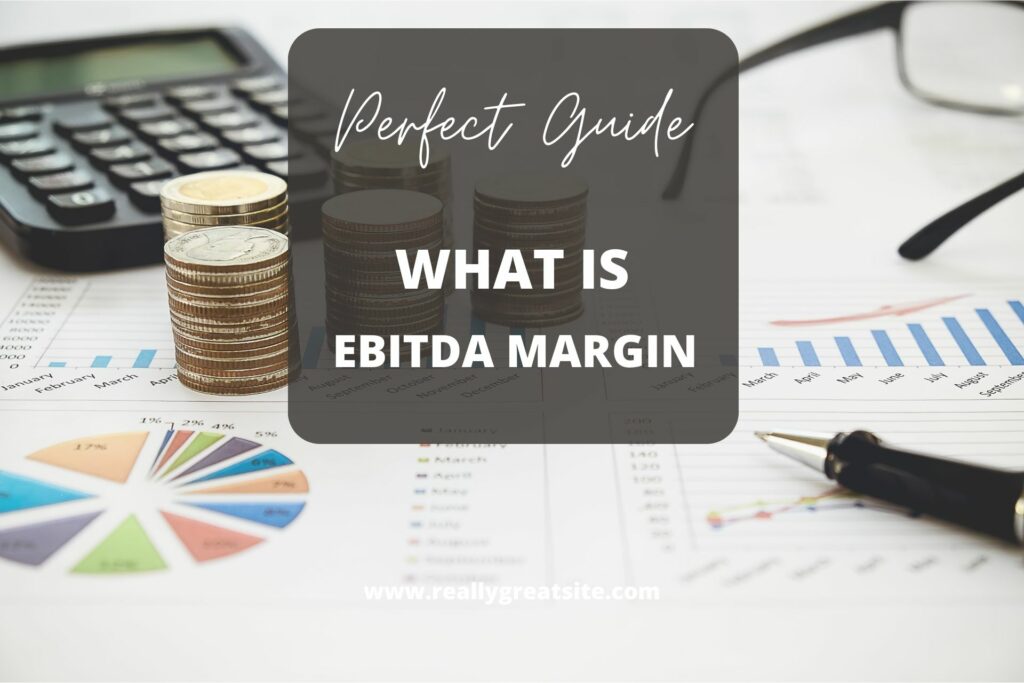What is EBITDA Margin: A Simple Guide for Beginners

In the world of finance and business, you might often come across terms like EBITDA margin. What does this term mean, and why is it important? Let’s break it down in simpler words what is EBITDA Margin.
What is EBITDA?
EBITDA stands for Earnings Before Interest, Taxes, Depreciation, and Amortization. It’s a financial metric that shows a company’s profitability before considering certain expenses.
- Earnings: This refers to the money a company makes from its operations.
- Interest and Taxes: These are expenses a company pays for using borrowed money (interest) and taxes to the government.
- Depreciation and Amortization: These represent the reduction in value of assets over time and the spreading out of certain expenses over a period, respectively.
Understanding Margin
Now, let’s talk about margin. A margin is like a slice or a portion of something. In the case of EBITDA margin, it’s a percentage that shows how much of a company’s earnings are turned into profit after considering operating expenses.
What is EBITDA Margin
EBITDA Margin is a financial metric that measures a company’s profitability by calculating its earnings before interest, taxes, depreciation, and amortization (EBITDA) as a percentage of its total revenue. This metric provides an indication of a company’s operational efficiency and its ability to generate profits from its core business operations. Investors and analysts commonly use EBITDA Margin to compare the financial performance of companies within the same industry.
A higher EBITDA Margin indicates that a company is generating more profits from its operations, while a lower EBITDA Margin suggests that the company has higher operating costs or lower revenues. Overall, EBITDA Margin is an important metric that can help investors and analysts evaluate a company’s financial health and potential for growth.
Related: Also explore Why can’t I follow people on tiktok
How to Calculate EBITDA Margin?
The formula for EBITDA margin is quite simple:
EBITDAMargin=EBITDA/TotalRevenue×100
- EBITDA: This is the earnings before accounting for certain expenses.
- Total Revenue: This is the total income a company earns from selling its products or services.
Why is EBITDA Margin Important?
Understanding EBITDA margin helps in assessing a company’s operational efficiency and profitability. A higher EBITDA margin generally indicates that the company is managing its operating expenses well and has a strong core business.
Example
Let’s imagine Company A and Company B both have the same revenue of $1,000,000. However, Company A has an EBITDA of $300,000 while Company B has an EBITDA of $200,000.
EBITDA margin (CompanyA)=300,000/1,000,000×100=30
EBITDA margin (CompanyB)= 200,0001,000,000×100=20
In this case, Company A has a higher EBITDA margin, showing that it generates more profit from its operations compared to Company B.
Limitations of EBITDA Margin
We will explore the limitations of EBITDA margin and how businesses can use it in conjunction with other financial metrics to gain a more comprehensive understanding of their financial performance.
1. EBITDA Margin Does Not Account for Capital Expenditures
One of the biggest limitations of EBITDA margin is that it does not take into account capital expenditures (CapEx). CapEx refers to investments made by a company in long-term assets such as property, plant, and equipment. These investments are essential for a business to grow and compete in the market. However, CapEx is not included in EBITDA margin, which can lead to an inaccurate representation of a company’s financial health. A business may have a high EBITDA margin, but if it is not investing in CapEx, it will eventually run into operational issues.
2. EBITDA Margin Does Not Consider Changes in Working Capital
Working capital is the difference between a company’s current assets and current liabilities. Changes in working capital can significantly impact a company’s financial performance. However, EBITDA margin does not account for these changes, which can lead to an incomplete picture of a company’s financial health. For example, a company may have a high EBITDA margin, but if it is experiencing a cash flow issue due to an increase in accounts receivable or inventory, it may struggle to pay its bills.
3. EBITDA Margin Ignores Interest Expenses
EBITDA margin does not take into account interest expenses, which can be a significant cost for businesses. Interest expenses can reduce a company’s profitability and impact its ability to invest in growth opportunities. If a business has a high EBITDA margin but a significant amount of debt, it may struggle to meet its financial obligations in the long term.
4. EBITDA Margin Does Not Consider Taxes
Taxes are an essential consideration for businesses when evaluating their financial performance. EBITDA margin does not account for taxes, which can vary widely depending on a company’s location and tax laws. A company may have a high EBITDA margin but still have a significant tax burden, which can impact its overall profitability.
5. EBITDA Margin Can Be Manipulated
Finally, EBITDA margin can be manipulated by businesses to present a more favorable financial picture. For example, a company may exclude certain expenses or include one-time gains to inflate its EBITDA margin. This manipulation can lead to an inaccurate view of a company’s financial health and should be viewed with caution.
Wrapping Up
In essence, EBITDA margin is a crucial financial metric used to evaluate a company’s profitability. It provides insights into how efficiently a company is generating profits from its core business activities, excluding certain expenses. By understanding and analyzing this metric, investors and analysts can make informed decisions about a company’s financial health and performance.






